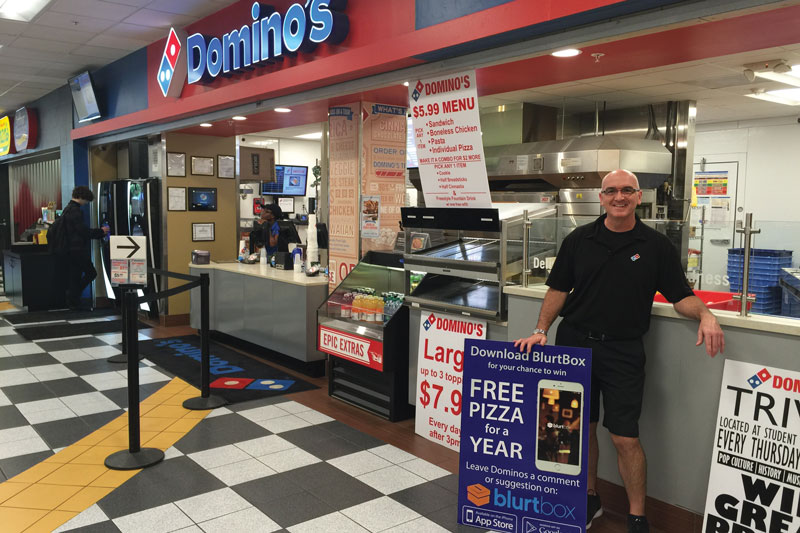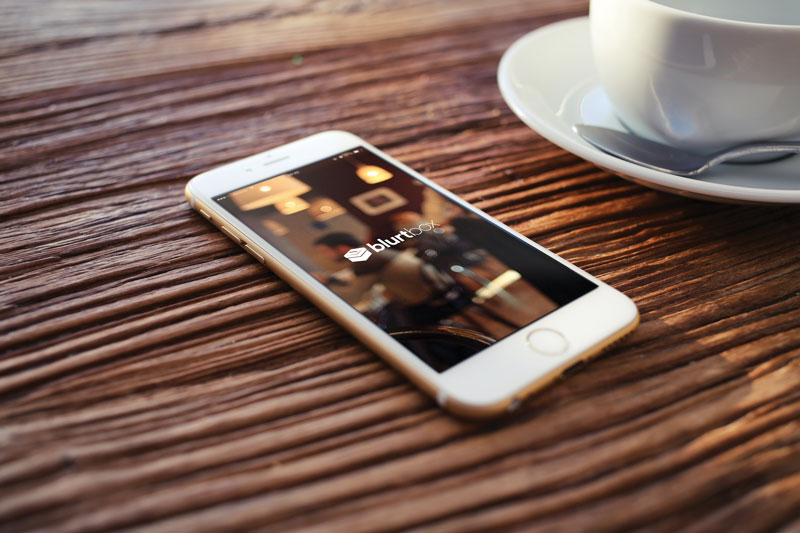Some pizzeria operators are more tech-savvy than others. Many traditionalists still log orders with pencil, paper and old-school cash register, while others have mastered social media and offer mobile apps with endless bells and whistles. If you’re one of the latter and have already tackled the basics—such as online ordering and a rewards program—what else can you add to give yourself a competitive edge?
Nowadays, new technology seems to spring up daily; it can feel impossible to keep up with the latest ways to communicate with your customers, help spread positive word about your business online, or make ordering from your pizzeria a more fun or interactive experience. Here, PMQ rounds up some interesting new ways operators are keeping up with the times—and exceeding customers’ expectations—through the powers of technology.
 |
|
Rewarding your loyalty program’s members at surprise intervals helps boost excitement, encouraging them to return—and tell their friends. |
Bringing Home the Beacon
Earlier this year, Business Insider reported that beacons, wireless transmitters that communicate with smartphone apps via a Bluetooth signal, are expected to rake in impressive profits for retailers in 2016. These Star Trek-like devices can be used to push out coupons or integrate loyalty programs, for example. So how can pizzerias cash in?
According to Brad Marg, CEO of Clutch in Ambler, Pennsylvania, beacons can be useful for both takeout and dine-in. “Brands are starting to incorporate triggered orders for customers once they enter the restaurant,” he explains. “This typically leverages mobile and beacon technology to automatically notify the kitchen—once a dine-in customer arrives—to start cooking his preordered food, maximizing freshness and minimizing waiting time. Or, for preordered takeout, when he walks in the door, an employee knows to bring his food up front.”
For apps with online ordering, brands also incorporate “skip-the-line” functionality through mobile app integration, Marg adds. “This allows takeout customers to not only order their food ahead of time but also prepay, so they can quickly and easily get in and out with no lines and no waiting. For many brands, this type of technology helps to deliver quick service and convenience, creating added value for the customer.”
Beacons can also be used for general greetings and follow-up. For example, when the customer enters your pizzeria, a pop-up on his phone can welcome him by name. When he leaves, a message pops up and asks, “How was your dining experience today?” The message can then lead the customer to a survey or invite him to share his experience online.
However, though beacons have shown promise in retail operations, they are still in their infancy, particularly for restaurants, so maximizing this tool may prove a learning experience. If you have an app and want to install a beacon in your pizzeria, ask your vendor how you can use it to improve the customer experience, enhance your operation or streamline staff duties. A beacon is an inexpensive investment (about $40), but you must think about how it will interface with your business, according to Kamron Karington, founder and CEO of Repeat Returns in Las Vegas. “The beacon will know when a customer with your app walks in, or you can set another proximity you want the beacon to recognize and pull up his last order or rewards info, but then what?” he asks. “Plus, if you bombard customers with messages, they can easily consider it an annoyance and opt out.”
Up for Review
Online reviews have exploded in recent years, and statistics show they can dramatically influence where people dine. According to Chicago-based ReviewTrackers, 88% of Internet users read online reviews to determine a business’ quality; in fact, a one-star ratings jump on Yelp can increase revenues by 9%. So it’s no surprise that new technologies are cropping up to help monitor and improve restaurants’ online profiles. “Social media is important to push info to customers, but reviews help operators listen to those customers,” notes Crystal Shuller, director of customer happiness for ReviewTrackers. “When you listen and engage, you know what you’re doing right and what to improve on.”
Operators can now hire a company to collect reviews from dozens of sources (from industry-specific sites like Yelp and OpenTable to general sites like Google and TripAdvisor), then send immediate notifications to the owners. These notifications let you see all reviews in one place or look for trending key phrases—for example, if a particular problem, like wait times or a specific employee, keeps cropping up. The Cottage Inn (cottageinn.com) pizza chain, which has dozens of corporate-owned and franchised locations, has instituted such a service to track customer feedback.
Of course, slip-ups will happen at any pizzeria from time to time, and those who have had negative experiences are far more likely to comment; thus, harnessing the power of your pizzeria’s biggest fans is also crucial. A review-monitoring service can encourage positive vibes online by sending a one-question survey after the meal: “On a scale of 1 to 10, how likely are you to recommend us?” (The survey invite can be printed at the bottom of a receipt or pop up on your landing page when a customer logs into your WiFi.) “If he says 7 or above, you can invite him to review you online; for a 6 or less, you can follow up with the customer directly,” Shuller says.
 |
|
Artie Stoeke, with two Domino’s stores in Orlando, Florida, encourages customers to provide feedback through in-store signage and box toppers. Photo courtesy Artie Stoeke. |
Domino’s (dominos.com) franchisee Artie Stoeke, based in Orlando, Florida, adopted a review-based technology at his two college-campus locations about a year ago. He works with the BlurtBox app, which he likens to a “modern-day suggestion box.” Customers download the app and type in comments for participating businesses, which then shoot directly to the operator. Unlike online reviews or even corporate-lodged complaints, it allows for quick fixes, ideally before negativity hits the Web—or for immediate praise to employees when reviews are glowing.
Even though the BlurtBox app’s customers can remain anonymous if they choose (college students are always looking for the latest Web-based rage, but they also value online privacy), Stoeke can still communicate directly with them through the app. “I like the real-time aspect, which allows me to get back to customers as quickly as possible, and I can see both of my stores’ performance on the back end,” he explains. “Customers are wowed when you get back to them so quickly, which ensures more loyalty.”
Game On
After Pizza Hut (pizzahut.com) garnered $1 million in sales in a mere four months thanks to its launch of an Xbox app, which allowed users to build pizzas with the click of their controllers, the pizza-gaming connection went mainstream. Now, companies provide “gamification” software to pizzerias nationwide. “Games at the point of sale inspire higher spending and more frequent visits and bring more fun to the dining experience,” notes Aron Ezra, CEO of OfferCraft in Las Vegas.
For example, pizzerias can deploy a customizable game that patrons play on their phones, on a tablet at the table, or near the cash register. In exchange for ordering certain types of items or visiting more frequently, customers earn the chance to play games (like Spin-the-Wheel or Pick-a-Briefcase) to win prizes that can be redeemed on a future visit. The pizzeria captures the customer’s email or cell phone number to send the prize—a gateway for future communication and another incentive for them to return or recommend the pizzeria to friends. “When we compare an identical offer that is distributed via a game versus one that’s given without, we consistently see far higher redemption rates on the offer that was given in tandem with the game,” Ezra explains. “Patrons are far more likely to remember the experience and feel that they ‘earned’ the offer.”
 |
|
Developers like OfferCraft are creating “gamification” software for pizzerias nationwide, allowing restaurant guests to play customizable games on their phones, on tablets or near the cash register and win prizes. Photo courtesy OfferCraft. |
Surprise and Delight
Of course, rewarding customers needn’t be utilized exclusively with gaming; some innovative brands are upping the fun factor with “surprise and delight” programs, whereby customers get unexpected rewards, from additional food items to size upgrades, according to Marg. “This adds a level of unpredictability and surprise to a brand’s loyalty program that many customers find appealing,” he says. “Additionally, this form of program removes the issue of rewards becoming an expectation of customers, while also creating excitement with the brand that builds affinity and loyalty.”
Although the rewards will seem “random” to customers, they’ll be fully automated on the back end with parameters you set through your loyalty program’s POS system. For example, if a customer isn’t up for a scheduled reward just yet but hasn’t visited in 60 days, you can surprise him with a special offer through your app—or, using beacon technology, welcome him back with a free beverage or dessert when he walks in (or shows up within a prescribed radius of the pizzeria). When customers expect a lag between rewards, they can grow bored or complacent with the program, but small freebies along the way can have big impact, even encouraging them to share their experience on social media or among co-workers, family and friends.
Ultimately, even for operators who have already jumped on the techie bandwagon, it can be tricky to pinpoint what to implement and how. Like with any marketing tactic, it’s important to understand first what you want to accomplish, who your customers are, and how you can best improve your operation through technology. Only then should you dive in—and closely monitor results. “It’s easy to get excited by new technology, but the key question to ask is, ‘What will I do with it?’” Karington concludes. “How will it work for your business? What’s the real benefit beyond the hype?”















